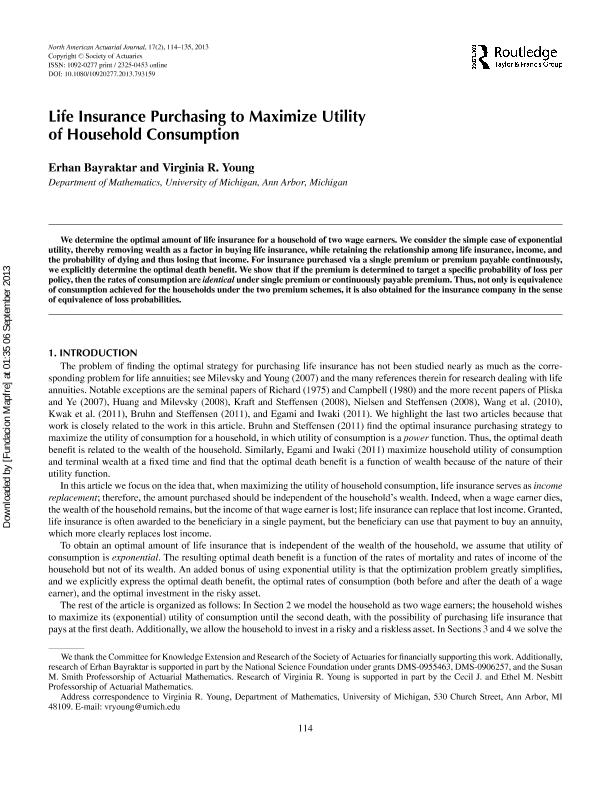Life insurance purchasing to maximize utility of household consumption

Contenido multimedia no disponible por derechos de autor o por acceso restringido. Contacte con la institución para más información.
| Tag | 1 | 2 | Value |
|---|---|---|---|
| LDR | 00000cab a2200000 4500 | ||
| 001 | MAP20130027494 | ||
| 003 | MAP | ||
| 005 | 20130906144626.0 | ||
| 008 | 130906e20130603esp|||p |0|||b|spa d | ||
| 040 | $aMAP$bspa$dMAP | ||
| 084 | $a6 | ||
| 100 | $0MAPA20090000537$aBayraktar, Erhan | ||
| 245 | 1 | 0 | $aLife insurance purchasing to maximize utility of household consumption$cErhan Bayraktar, Virginia R. Young |
| 520 | $aWe determine the optimal amount of life insurance for a household of two wage earners. We consider the simple case of exponential utility, thereby removing wealth as a factor in buying life insurance, while retaining the relationship among life insurance, income, and the probability of dying and thus losing that income. For insurance purchased via a single premium or premium payable continuously, we explicitly determine the optimal death benefit. We show that if the premium is determined to target a specific probability of loss per policy, then the rates of consumption are identical under single premium or continuously payable premium. Thus, not only is equivalence of consumption achieved for the households under the two premium schemes, it is also obtained for the insurance company in the sense of equivalence of loss probabilities. | ||
| 773 | 0 | $wMAP20077000239$tNorth American actuarial journal$dSchaumburg : Society of Actuaries, 1997-$x1092-0277$g03/06/2013 Tomo 17 Número 2 - 2013 |

